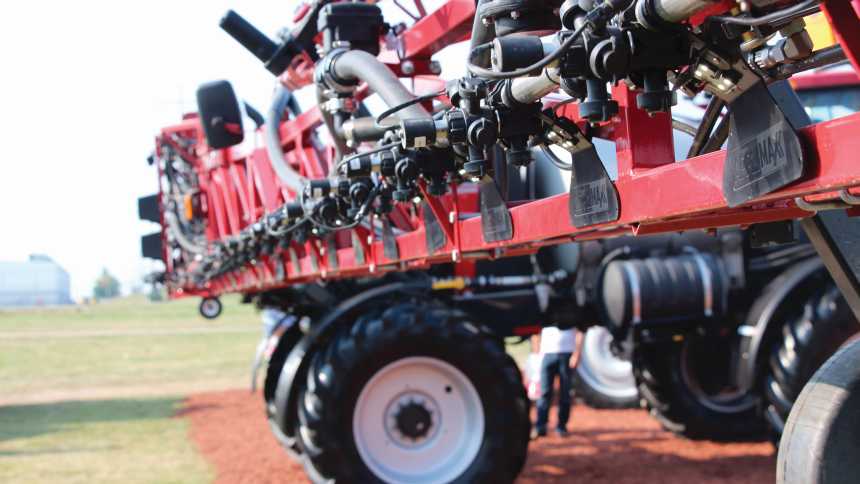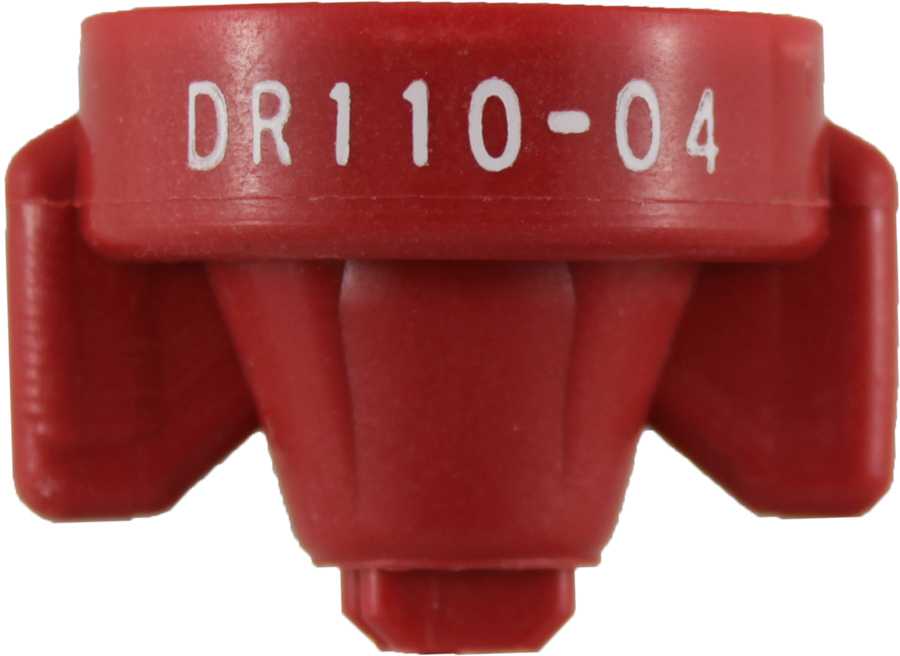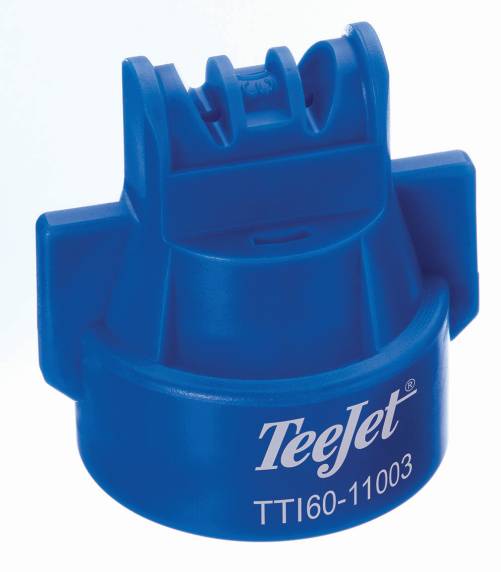Spray Application: A Nozzle Renaissance

Solid designs promise better coverage and less drift in this new era of more complex cropping systems.
If you had asked four-decade ag veteran Mark Bartel, President of Wilger Inc., just a few years ago what lay ahead for nozzle innovation, he honestly would have said, “Not too much.” The industry had developed some effective products. But today sprayers have come under much closer scrutiny. And with the development of new herbicide-resistant cropping systems, nozzles are under EPA’s microscope.
Related: Broadcast Spray Hoods Stop Wind Factor
Nozzle manufacturers have been upping their R&D game to prove and improve their products. They also have been working with Dow AgroSciences, Monsanto and BASF for almost three years now to pinpoint which tips work best with the new 2,4-D and dicamba systems. The list of specific nozzles approved for each label by EPA is growing, with new ones being added as the season launched.
Sampling of Products
Wilger’s Combo-Jet DR Series is on the dicamba label. Bartel explains these tips function well with pulse width modulation (PWM) systems such as AIM Command, Hawkeye or Capstan. “Ours are the only ones that are approved that are not air induction tips. There’s quite a few of those machines out there with the pulsing systems, and with air induction type tips, operators have to go to conventional or rate controller systems — they have to turn off the pulsing system — to use the other types of tips.” Bartel says PWM systems offer the constant pressure which maintains constant droplet size, driftable fines and constant application rate over a larger speed range.
In fact, the morning after Combo-Jet DR 110-10s were approved in February, customers were calling Wilger to order. “We’ve sold probably 30 to 40 times the number of tips than we have in the past,” says Bartel.
Wilger has also developed the new Combo-Jet UR tip, which features a dual chamber design with a “stacked” pre-orifice. The big advantage is it gives a larger droplet size and fewer fines over a wider pressure range and sizes in a flat fan spray pattern — and from what testing shows, “better uniformity than anything on the market today, including our own tips,” says Bartel. EPA approved a number of UR tips at presstime for Monsanto’s system.
Due to its extremely good drift control the Turbo TeeJet Induction tip (TTI ), was initially the only tip series approved for the dicamba system, and it “continues to be the top choice due to the wide operating pressure and capacity choices approved for applications,” says Tim Stuenkel, Global Marketing Communications Manager with TeeJet Technologies.
“With 2,4-D, the TTI, along with the original AI and AIXR tips provide very good drift control while offering slightly smaller droplet sizes for improved coverage,” he explains.
The D Series of Greenleaf Technologies’ popular TurboDrop nozzles were designed with dicamba, 2,4-D and glyphosate applications in mind,” says Will Smart, President. “These nozzles deliver ultra-coarse (UC) and extremely coarse (XC) spray droplets for maximum drift control over a wide operating range.”
Greenleaf Technologies also offers DualFan TurboDrop nozzles which can spray the target four times in one pass. “Spraying with extremely coarse and ultra coarse droplets can really hurt spray coverage,” Smart says. “The Dual Fan nozzles can help improve coverage with these very large droplets by covering the plant or weed from the front and the back.”
Hypro’s Ultra Lo-Drift (ULD) spray tips produce XC and UC droplets across a wide pressure range making them ideal for 2,4-D and dicamba spraying and are approved on the new chemical labels, says Wayne Steward, Global Product Manager. “Their large air-centered droplets provide superior resistance to drift.”
Lechler makes several styles of drift reduction nozzles. The ID nozzle creates the largest droplet size profile in company’s product line, and a number of nozzles in the ID family have been approved for the new cropping systems, says Al Harmon, Spray Products Specialist.
“The IDK is a good all-around choice for sprayers that operate at lower pressures — the optimal spray pattern forms at lower relative pressures. All of our drift reduction nozzles have predictable, repeatable performance curves, and our retailers can prescribe flow and pressure recommendations for growers with confidence.
“For use in canopied crops, the IDKT and our newest IDTA nozzles are twin pattern nozzles that are great options when coverage is key,” adds Harmon. The IDTA is designed to be used by applicators at higher ground speeds, as the patterns will apply more liquid to the front of the boom.
More New Items
The TTI TwinJet (TTI60) Spray Tip, an air induction, twin flat spray tip just went into production at the end of 2016. It has some strong similarities to the TTI tip, in terms of the UC and XC droplets produced and produces even fewer driftable fines. The twin pattern offers the advantage of improved coverage and canopy penetration for post-emerge applications, says TeeJet’s Stuenkel. The nozzle does not currently have approval for use with any of the new generation dicamba products, but TeeJet expects to get the okay for next season.
CP Products has developed a new check valve for nozzles that helps prevent unwanted chemical loss. The Air Stop check valve gives applicators a reliable, fast air shut off, says Michelle Parrent. She notes that while standard pinch valves can take hours to completely shut off with leaky bladders, the CP Air Stop shuts off within seconds, with no leaks and drips.
“Air Stop combos are available with built in nozzle that produces a range of droplet spectra from Medium to Ultra Coarse all in one easy to maintain unit,” she describes. Conversion kits are available for already existing CP check valves and Turbo Floater Combos.
More news from the company: It’s near release of an adapter that will allow use of other manufacturers’ approved tips on its Air Stop and Turbo Floaters. CP is also working on a new tip line for its 74Q carousel nozzle. These tips are designed to work with the new dicamba system. CP is in the early stages of testing for the line — and is already showing some positive results.
Raising Questions
Concerns have been raised that droplets from the latest nozzles are too coarse, jeopardizing coverage and opening the door for herbicide resistance to develop.
Chemical manufacturers have attempted to offset the problem by putting guidelines on application rate and speed. Rates are 10 to 15 gallons per acre, and maximum rig speed is 15 mph.
Greenleaf Technologies’ Smart also wonders how growers are going to deal with problem weeds in the large buffer zones mandated by product labels.
What about the challenges of making decisions about new spray equipment? Specific nozzles at specific pressures are listed on dicamba system labels — making nozzle selection process more complex as operators evaluate rate, speed and droplet size combinations. “At Hypro we’ve tried to make this process more simple by creating a new easy select chart by rate, showing the minimum and maximum speeds the sprayer can go when using the Hypro ULD nozzle at a certain carrier rate,” says Steward.
Indeed, both nozzle and chemical manufacturers are publishing helpful lists and charts to make tip choices easier.
Dr. Erdal Ozkan, Professor and Extension Specialist with The Ohio State University doubts that many rigs are already are equipped with the nozzles needed for 2,4-D or dicamba products. Buy the tips now, he urges, as many operators will want them. “There may be short-term shortages,” he says.
Ozkan also recommends keeping several types and sizes of nozzles on the boom, for spraying a variety of pesticides during the season.
Going forward, companies are working to develop nozzles to meet federal and state requirements for drift reduction but still provide efficacy to the growers.
“We are ensuring good efficacy in the design by modifying features like droplet size, spray angle and spray incline to meet their specific needs while still reducing drift,” says Hypro’s Steward. “I believe we will continue to see more drift reduction restrictions added to more and more chemicals as time goes on so it will be up to us to stay ahead and produce the right nozzles.”
Across the industry, Lechler’s Harmon sees great drift reduction offerings in place from all the manufacturers. “We just need to use them as designed and understand their differences and advantages,” he says. “Our immediate issues will be educating the applicators to pick the optimal tank mix programs and nozzles that best meet their local field conditions.
“As we get feedback and results from this season’s work, we can adjust and add to the tools the retailers have at their disposal in their local markets. The attention and focus on these details is an ongoing effort for us.”
Education is huge, agrees Lucas Olenick, Marketing and Product Coordinator with Wilger. He points out that spraying conditions can vary from field to field, farm to farm, day to day and even hour to hour. As growers continue to learn to tailor their spray applications to their conditions, it will allow them to both get better application in ideal conditions, but more importantly, to manage the application in less than ideal conditions.







